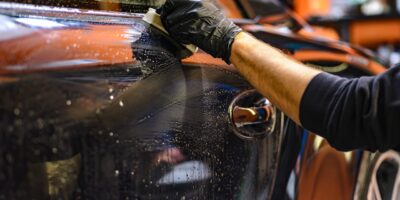Can You Jump a Car in the Rain?
Can You Jump a Car in the Rain?
Jumping a car in the rain raises valid safety concerns. While it’s not uncommon to deal with a dead battery on a rainy day, the interaction of electricity and water can be dangerous if not managed correctly. Knowing the right steps and precautions can make the process safe and effective.
Potential Risks and Safety Precautions
Water and electricity do not mix well. The combination can lead to shocks or short circuits. It’s important to note potential risks:
- Electrical shock: Wet conditions increase the chance of an electrical shock, which can be harmful.
- Short circuits: Water can cause unintended electrical connections, leading to damage to the car’s electrical system.
- Slippery conditions: Wet surfaces can be slippery, causing loss of grip and control while maneuvering around the vehicle.
Preparation: What You Will Need

Having the right tools and equipment handy can streamline the process. Essential items include:
- Jumper cables: Preferably with insulated handles to reduce electrical shock risk.
- Another vehicle: A car with a functioning battery to provide the jump.
- Dry clothes and towels: To dry off areas where you will be working, minimizing water contact.
Ensuring you have dry surfaces and insulated equipment reduces the hazards of combining water and electricity. Lay out your tools before starting to avoid unnecessary delays or risks.
Steps for Jumping a Car in the Rain
Positioning the Vehicles
Position the two cars close to each other but without allowing them to touch. This ensures the cables reach both batteries without overstretching and reduces the risk of any metal-to-metal contact that might cause sparks.
Connecting Jumper Cables
Connecting jumper cables involves these straightforward steps:
- Start by turning off both vehicles to eliminate any running electrical currents that can trigger sparks.
- Connect the red (positive) jumper cable to the positive terminal (+) of the dead battery.
- Attach the other end of the red cable to the positive terminal (+) of the good battery.
- Connect the black (negative) jumper cable to the negative terminal (-) of the good battery.
- Attach the other end of the black cable to an unpainted metal surface on the car with the dead battery, away from the battery itself, such as a bolt or bracket.
Doing this ensures a complete circuit and reduces the risk of sparks near the battery, which could be more dangerous in wet conditions.
Starting the Vehicles
First, start the engine of the good car and let it run for a few minutes. This helps to charge the dead battery. Then, try to start the car with the dead battery. If it doesn’t start, wait a few more minutes before trying again. Once the dead car is running, carefully disconnect the cables in reverse order:
- Remove the black cable from the metal surface on the dead car.
- Disconnect the black cable from the negative terminal of the good battery.
- Remove the red cable from the positive terminal of the good battery.
- Finally, disconnect the red cable from the positive terminal of the dead battery.
Additional Safety Tips
When jumping a car in wet conditions, follow these guidelines:
- Avoid standing in puddles or wet areas to minimize the risk of electrical shock.
- Use rubber gloves and boots if available, as these materials are non-conductive and provide additional protection.
- Ensure the areas around the battery terminals are dry before attaching the jumper cables.
- Keep your movements deliberate and cautious to maintain control and prevent accidental contact with wet surfaces.
What to Do if the Car Doesn’t Start
If the car still doesn’t start after several attempts, you may need to investigate further. Possible reasons can include:
- Corroded battery terminals: Clean the terminals as corrosion can prevent a good connection.
- Faulty alternator: The alternator may not be charging the battery properly.
- Severely drained battery: In some cases, the battery may be too depleted to charge with jumper cables alone.
If you suspect any of these issues, it may be time to call for professional assistance or to replace the battery.
Preventive Measures
Preventing battery problems can save you from the hassle of jumping a car in the rain. Consider these tips:
- Regular maintenance: Have your battery and electrical system checked regularly by a professional.
- Inspect battery terminals: Keep them clean and free from corrosion.
- Limit short trips: Short drives can prevent the battery from fully charging. Occasionally take longer trips to keep the battery healthy.
Taking these preventive measures can extend the life of your battery and reduce the occurrence of inconvenient breakdowns.
nn
Essential Maintenance Products
n
Keep your classic car running reliably with these trusted maintenance products:
nn
Battery Maintainer
n
Battery Tender Plus 12V – The gold standard for keeping your classic car battery charged during storage. Automatically maintains optimal charge without overcharging.
n
nn
Portable Jump Starter
n
Povasee 5000A Jump Starter – Compact, powerful, and reliable. This lithium jump box can start any 12V vehicle and doubles as a USB power bank for emergencies.
n
n
As an Amazon Associate, we earn from qualifying purchases.



Subscribe for Updates
Get the latest articles delivered to your inbox.
We respect your privacy. Unsubscribe anytime.